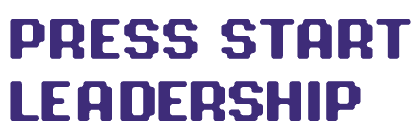Expanding Your Universe: Strategies for Indie Studios to Build Engaging Transmedia Brands
In the realm of indie video game development, where innovation meets storytelling, the concept of transmedia branding emerges as a beacon of untapped potential. Transmedia storytelling—where a single narrative stretches across multiple platforms, each contributing uniquely to the tale—offers indie developers a golden opportunity to enrich their storytelling, engage a broader audience, and open new revenue streams. This guide embarks on a journey through the essentials of transmedia brand development tailored for indie game studios ready to extend their narratives beyond the gaming console.
The Essence of Transmedia Storytelling in Indie Game Development
At its core, transmedia storytelling transcends traditional storytelling mediums, weaving tales that sprawl into novels, comics, movies, and more, all originating from the heart of a video game. For indie developers, this narrative approach not only elevates the gaming experience but also cultivates a more immersive universe for their audience. But what sets transmedia storytelling apart in the indie gaming world is its ability to foster a deeper connection between players and the game, transforming passive audiences into active participants in the narrative’s universe.
Understanding Emotional Resonance in Transmedia Narratives
The first step in developing a successful transmedia brand is recognizing the power of emotional resonance. A game’s story must strike a chord with its audience, evoking emotions that linger long after the screen goes dark. This emotional hook becomes the thread that ties different narrative platforms together, ensuring that each extension of the story feels like a natural continuation of the game’s universe.
Selecting the Right Platforms for Your Story
Not every story needs to unfold on every possible platform. The key to effective transmedia storytelling is selecting the right mediums that best complement and expand your game’s narrative. For some, this might mean exploring the backstory of a beloved character through a graphic novel; for others, it could involve delving into the game’s lore via a podcast series. The choice of platforms should be strategic, aiming to uncover new facets of the game’s universe in ways that intrigue and delight your audience.
Benefits of Developing a Transmedia Brand
Broadening Your Audience Reach
One of the most compelling reasons for indie studios to venture into transmedia storytelling is the opportunity to capture a wider audience. By diversifying the narrative across various platforms, studios can engage different segments of their target audience, attracting those who might not be traditional gamers but are drawn to the story’s other elements.
Monetization and Brand Expansion
Transmedia storytelling opens up new avenues for monetization beyond the game itself. Merchandise, books, and paid digital content related to the game’s universe can provide additional revenue streams for indie studios. Moreover, a well-executed transmedia brand enhances the game’s visibility and appeal, potentially attracting partnerships and collaborations that can fuel further growth.
Enhancing Player Engagement and Loyalty
When players are deeply invested in a game’s narrative, their engagement extends beyond gameplay. Transmedia storytelling enriches the player’s experience, offering new ways to interact with the game’s universe and deepening their attachment to the story. This heightened engagement fosters a loyal fan base, eager to explore every narrative thread and recommend the game to others.
Planning Your Transmedia Journey
Strategic Narrative Planning
The cornerstone of a successful transmedia brand is a well-thought-out narrative that seamlessly integrates with various media forms. Begin with a strong, central story that is compelling enough to be explored through different lenses. This narrative should be flexible, allowing for expansion and adaptation without losing its core essence.
Identifying Core and Complementary Platforms
Not every platform will serve your narrative effectively. Identify which platforms best complement your game’s story and audience. For instance, if your game has a rich, visually driven world, platforms like graphic novels or animated series could be more complementary. Each chosen platform should add a unique layer to the narrative, offering fans a new experience with each medium.
Building a Content Timeline
Timing is crucial in transmedia storytelling. Develop a content release timeline that strategically introduces new narrative elements at points where they’ll have the most impact, keeping the audience engaged and anticipating more. This timeline should consider major game updates, community events, and external factors like holidays or relevant anniversaries.
Executing Your Transmedia Strategy
Creating Cohesive Content Across Platforms
Maintain narrative consistency across all platforms. This doesn’t mean every piece of content needs to tell the same story, but each should unmistakably belong to the same universe. Character backstories, lore, and thematic elements should be coherent, whether a fan is reading a comic, watching a web series, or playing the game.
Leveraging Cross-Promotion
Use each platform to cross-promote content on the others. For example, exclusive in-game items could be linked to comic book purchases, or hidden game codes could be embedded in web series episodes. This not only boosts engagement across your transmedia brand but also encourages fans to explore the narrative deeply.
Engaging with Your Community
The community around your game can be a powerful asset in transmedia storytelling. Engage with your audience through social media, forums, and in-game events to gather feedback, tease upcoming content, and foster a sense of belonging among fans. Community-generated content can also be a rich source of ideas for expanding your narrative.
Overcoming Challenges in Transmedia Development
Resource Allocation
Developing content across multiple platforms can strain limited resources. Prioritize projects that offer the most value in terms of audience engagement and revenue potential. Consider partnerships or collaborations with creators who can bring new dimensions to your narrative while sharing the development load.
Maintaining Narrative Quality and Consistency
As your universe expands, keeping the narrative quality high and consistent across platforms can become challenging. Establish a ‘narrative bible’—a comprehensive guide to your game’s universe that all creators can refer to. Regularly review content across platforms to ensure consistency and quality.
Adapting to Audience Feedback
Audience feedback is invaluable, but it can also be diverse and sometimes contradictory. Develop a flexible approach to incorporating feedback, focusing on changes that align with your core narrative and enhance the overall transmedia experience. Use feedback as a tool for improvement, not a constraint on creativity.
Final Thoughts
Embarking on a transmedia brand development journey offers indie video game studios a unique opportunity to deepen audience engagement, explore new revenue streams, and build a lasting legacy. By carefully planning your narrative, executing a cohesive strategy across chosen platforms, and skillfully navigating the challenges that arise, your studio can create an immersive, multi-dimensional universe that captivates fans and stands the test of time.
This exploration into transmedia brand development is just the beginning. The landscape is ever-evolving, with new platforms and technologies continually emerging. Staying adaptive, creative, and responsive to your community will ensure that your transmedia brand remains vibrant and engaging for years to come.
Thank you for reading this article to the end. I hope it has been informative and helpful. If you’d like to learn more about the topics we covered, I invite you to check out my podcast and my YouTube channel where I delve into these subjects in more depth.
Additionally, I would love to stay in touch and keep you updated on all the latest developments and insights in the world of leadership. That’s why I encourage you to sign up for my newsletter. Not only will you receive regular updates, but as a thank you for joining, I will also send you my free eBook, “5 Heroic Leadership Skills.” This eBook is packed with practical tips and strategies that will help you take your leadership skills to the next level.
So don’t wait! Sign up for my newsletter today and start your journey towards becoming a more effective and inspiring leader. I can’t wait to hear from you.
Work With Me!
If you’re on the quest to elevate your team’s leadership, production, or game design capabilities, I’m here to assist! Leveraging extensive experience and a strategic approach, I offer personalized audits, bespoke workshops, and leadership retreat facilitation to drive your team toward excellence. My commitment is to provide efficient, reliable, and proven support, ensuring you have the tools and insights needed to thrive. Ready to unlock your team’s full potential and achieve unparalleled success? Don’t hesitate—Press Start on your journey to transformation today! Feel free to reach out directly to discuss how we can tailor a solution to meet your unique needs and goals. Let’s connect and take your team’s performance to the next level!
🔗 www.pressstartleadership.com
📧 contact@pressstartleadership.com


